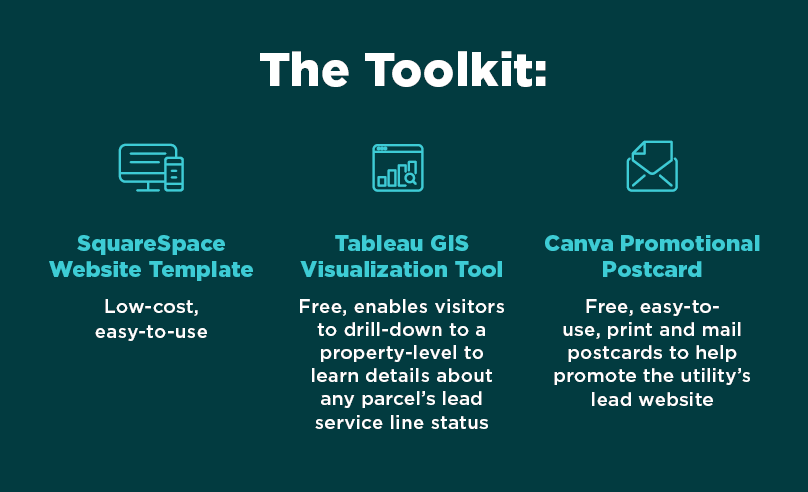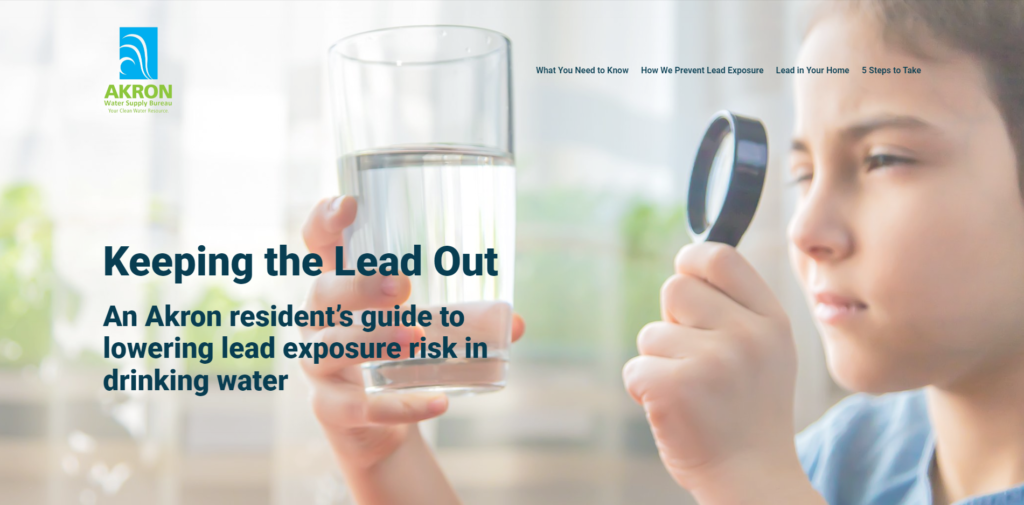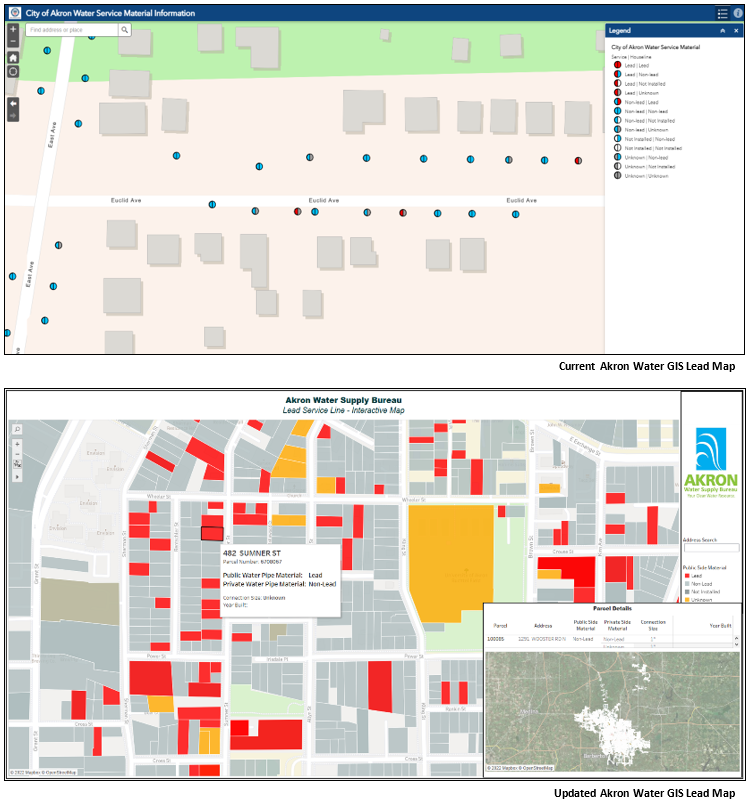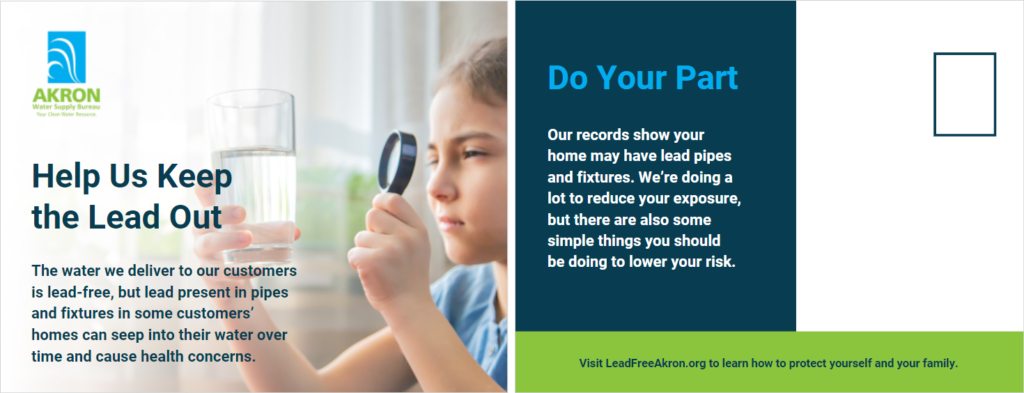According to the EPA, there are as many as 10 million homes in the U.S. with lead service lines – lead pipes that connect the home to the drinking water main in the street. More than 50 organizations and individuals in the water sector submitted entries aimed at expediting the removal of lead service lines in municipalities across the country. In the Communications category, Raftelis’ submission was rated best at communicating simple and effective strategies that give water consumers useful, actionable information on lead.
As professional strategic communicators, Raftelis’ Strategic Communications Services group has spent their careers in the water industry finding innovative ways to communicate critical and often complex concepts to water utility customers and stakeholders using plain language that is easy to understand.
On this project, we convened an in-house multidisciplinary team that included data analysts, Geographic Information Systems (GIS) experts, website developers, and graphic designers. To ensure we were not operating in a vacuum, we partnered with an existing client – Akron Water – to ensure our approach was grounded in the real world.
Together, our charge was to imagine how emerging communications tools can help water utility customers interested in learning how to manage their risk of lead exposure in drinking water. Our vision was to create an easily-adoptable toolkit with multiple communications pieces that would enhance lead communication while reducing barriers to understanding.
First, we needed to identify which cloud-based software applications to use as we built our toolkit. We evaluated myriad emerging communication tools and settled on three that sit at the nexus of free/low-cost, are easy-to-use, and provide an adequate level of functionality. We landed on using SquareSpace for the website template, Tableau for the GIS data visualization tool, and Canva for the promotional postcard.

We also performed secondary research; studying how a variety of water providers across the country addressed lead exposure risk communications on their websites. This research enabled us to identify both industry best practices and areas where there could be improvement.
Next, we took existing content and data from Akron Water and made adjustments with the goal of increasing readability and enhancing understanding. This included developing a GIS-based lead service line visualization tool, converting some difficult to understand text passages to more engaging graphics, and breaking complicated scientific information down into bite-sized pieces.
Raftelis also gave a lot of consideration to how the lead risk information is organized, with special focus on delivering a flow of information that unfolds logically; almost story-like. The website includes the following sections:
According to The Literacy Project, the average American reads at a 7th- to 8th-grade level. Our approach was to rewrite all the text, aiming for an 8th-grade reading level throughout the material. Akron Water’s current site receives a Flesch-Kincaid Reading Ease score of 56.2, meaning it can easily be read by an individual with a high school diploma. Our updated content receives a Flesch-Kincaid Reading Ease score of 60.8, meaning it can easily be ready by an individual with a junior high reading level.
Raftelis also used the CDC’s “Clear Communication Index” to evaluate the readability of the original and updated material. Akron Water’s original content scored a respectable 74%, but our updated content scored a perfect 100%.
To ensure ADA compliance, we followed the WCAG 2.0 guidelines. According to the WCAG, the four primary goals for a website is that it is perceivable, operable, understandable, and robust. Keeping these guidelines in mind, our prototype makes it easy to apply elements such as image tags and captions if it were to be developed into a fully functioning website.
Other ways we enhanced readability was to use a lot of open space, include significant color contrast, and use large text very deliberately. There is design consistency throughout, including headings and navigation.

Our toolbox uses an embedded GIS map that draws readers in and encourages them to engage directly with Akron Water’s data. This widget enables visitors to search the database for properties of personal concern, for example their home, their children’s school, house of worship, and quickly learn if the parcel is served by a line that contains lead.

Websites are most effective when stakeholders know information is available. We designed a direct mail postcard to help Akron Water promote its new website to customers the utility knows are served by lead service lines and are therefore at greatest risk.

Raftelis was honored with a $10,000 prize for its win, which we intend to donate to the Raftelis Charitable Gift Fund which supports nonprofits working in water protection and affordability, and scholarships for students.